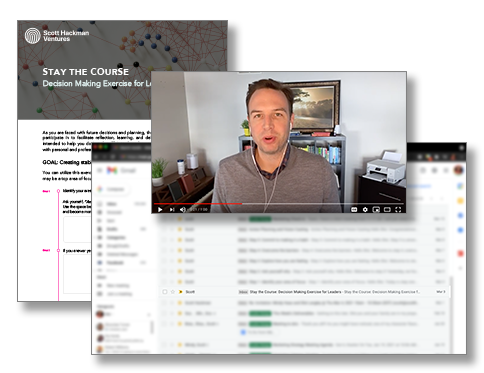Throughout our lives, we’ve been encouraged to maintain a strictly professional demeanor in the workplace, avoiding personal aspects. But the truth is, the workplace is a vibrant ecosystem where people come together, each with their personal needs, strengths, and aspirations. Thriving organizations value employees bringing their whole selves to work, fostering a positive culture, and leading to both profits and lasting success.
In this blog post, let’s dive into the whole person approach to work, examine why it matters, and explore strategies to craft a workspace where everyone feels valued and embraced.
What is The Whole Person Approach to work?
When we arrive at work, we bring not only our skills but also our complex emotions, needs, and motivations. It’s important to acknowledge that employees are more than just a workforce or assets to invest in solely for a return. A whole person work culture is an investment in effective programs that support all employees and nurture their whole selves. It means benefits beyond the basics – like gym plans or weekly meditation activities. It means creating safety and trust with a team to recognize, appreciate, and assist employees with their challenges, responsibilities, priorities, and passions so they can thrive personally and professionally.
Why does the Whole Person Approach to work matter?
Acknowledging and supporting your employees as a whole person is not only essential for employee engagement but also for overall business success.- Mental Health Affects Productivity Recognizing mental health issues at work, like depression and anxiety, is now seen as a significant economic concern globally. In 2010, the projected cost of mental illness was $2.5 trillion, expected to reach $6.1 trillion by 2030 from a human capital perspective.1 Research suggests that fostering a positive work environment, with flexibility and autonomy, can reduce negative impact on productivity.2
- Well-Being Influences Employee Retention Boosting employee retention is vital for a competitive edge and long-term success. The Society for Human Resource Management (SHRM) underscores the role of retention programs in attracting and keeping skilled staff, reducing turnover costs.3 Employee well-being directly influences retention, with those facing challenges and burnout being 2.6 times more likely to seek new opportunities. Even if they stay, they typically show 13% lower confidence in performance and are half as likely to discuss goals with their manager. (Harvard Business Review, 4)
- Fostering Future Leaders’ Development Can Ensure Success Ahead Most organizations recognize the importance of having the right leaders, yet only 14% are satisfied with their succession plans. Neglecting long-term investment in an employee development plan could be the crucial missing element—a whole person approach effectively applied. This approach enhances career development for leaders and fosters the advancement of top talents who embody the organization’s culture and vision. Deloitte’s research indicates that at least 30 percent of newly hired executives fail in their first 18 months, mostly due to poor culture fit.5
How to apply the Whole Person Approach to your workplace?
1. Start with reviewing and rebuilding your organization’s working culture. In a recent survey by Harvard Business Review, 78% workers highlighted that a healthy and sustainable culture is the most impactful factor to their mental health.6 Organizations thrive when individuals feel safe to bring their whole selves to what they do.
Take a moment to assess your organization’s work culture and collaboration methods, ensuring alignment with these 4 aspects:
- Psychological safety: Cultivate an environment where individuals feel free to express ideas, ask questions, voice concerns, or admit mistakes without fear of punishment or judgment.
- Vulnerability: Encourage employees to speak their minds, especially in moments of uncertainty, risk, or emotional exposure.
- Empathy: Promote an understanding and connection with the situations and feelings of others.
- Trust: Build a foundation of belief in the reliability, truth, ability, and strength of your team members.
Free Psychological Safety Assessment Tool
This tool will help you gauge the psychological safety on your team.
2. Additionally, consider inquiring about which benefits, programs, and working methods hold the most significance to your employees. Discard those that do not contribute and invest in those that genuinely support your employees. Remember, this is not a one-time endeavor – it’s essential to continuously assess the success of well-being methods, particularly when integrating new organizational values. Every organization has its own unique atmosphere, so it’s crucial to construct what truly aligns with your people.
3. Finally, embracing a whole person approach requires leaders to foster a perpetual curiosity and openness to feedback. Cultivate a continuous learning mindset by exploring new and innovative benefits and programs that can support your employees. Stay connected by leveraging relationships with professionals in multiple industries, participating in relevant social media groups, and staying informed through human resources publications.
At SHV, we offer a wealth of resources to enhance your potential, performance, and engagement, particularly during periods of change, business growth, and transitions in work culture. If you find this blog valuable, explore further with a discovery call.


References
- Paul, Anjali Kunampurat, and Theresa Nithila Vincent. “Employee motivation and retention: issues and challenges in startup companies.” Int. J. Creat. Res. Thoughts 6 (2018): 2050-2056.
- Bryan, Mark L, et al. “Dysfunctional Presenteeism: Effects of Physical and Mental …” Dysfunctional Presenteeism: Effects of Physical and Mental Health on Work Performance, 2022, onlinelibrary.wiley.com/doi/10.1111/manc.12402.
- The Global Economic Burden of Non-Communicable Diseases, www3.weforum.org/docs/WEF_Harvard_HE_GlobalEconomicBurdenNonCommunicableDiseases_2011.pdf. Accessed 16 Feb. 2024.
- “The Holy Grail of Effective Leadership Succession Planning.” Deloitte Insights, www2.deloitte.com/uk/en/insights/topics/leadership/effective-leadership-succession-planning.html. Accessed 16 Feb. 2024.
- Moss, Jennifer. “Burnout Is about Your Workplace, Not Your People.” Burnout Is About Your Workplace, Not Your People, 21 Dec. 2021, hbr.org/2019/12/burnout-is-about-your-workplace-not-your-people.
- Tenney, Matt. “How Employee Retention Affects the Organization – Business Leadership Today.” Business Leadership Today – The Resource for Leaders Working to Build and Sustain World-Class Teams and Organizations in Today’s Business Environment., 28 July 2023, businessleadershiptoday.com/how-employee-retention-affects-the-organization/.



